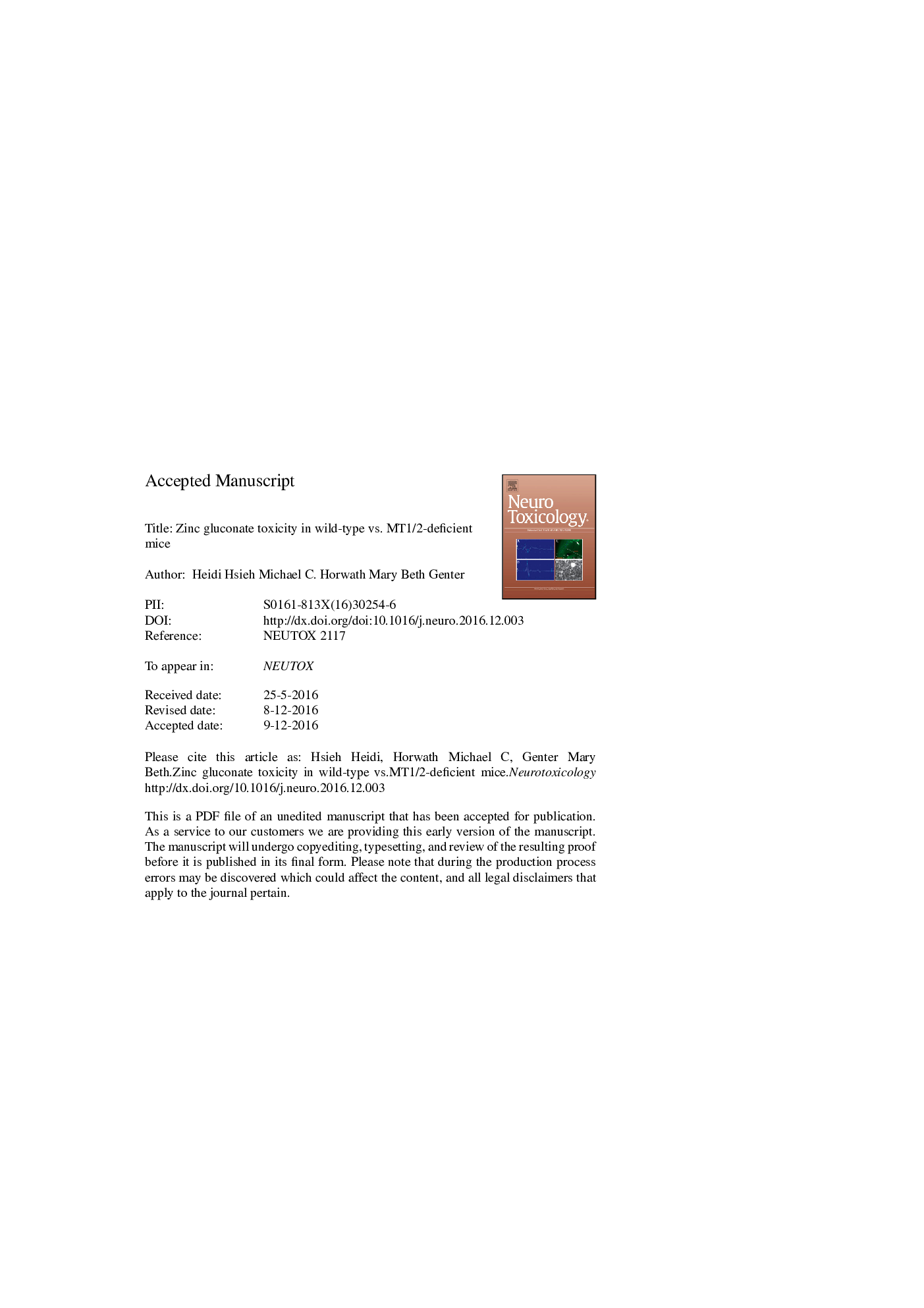| کد مقاله | کد نشریه | سال انتشار | مقاله انگلیسی | نسخه تمام متن |
|---|---|---|---|---|
| 5560873 | 1562036 | 2017 | 18 صفحه PDF | دانلود رایگان |
عنوان انگلیسی مقاله ISI
Zinc gluconate toxicity in wild-type vs. MT1/2-deficient mice
دانلود مقاله + سفارش ترجمه
دانلود مقاله ISI انگلیسی
رایگان برای ایرانیان
کلمات کلیدی
موضوعات مرتبط
علوم زیستی و بیوفناوری
علوم محیط زیست
بهداشت، سم شناسی و جهش زایی
پیش نمایش صفحه اول مقاله

چکیده انگلیسی
Previous studies have suggested that oral zinc supplementation can help reduce the duration of the common cold; however, the use of intranasal (IN) zinc is strongly associated with anosmia, or the loss of the sense of smell, in humans. Prior studies from this lab showed that upregulation of metallothioneins (MT) is a rapid and robust response to zinc gluconate (ZG). Therefore, we assessed the role of MT in the recovery of nasal epithelial damage resulting from IN zinc administration. The main studies in this investigation used a high dose of ZG (170Â mM) to ensure ablation of the olfactory mucosa, so that the progression of histological and functional recovery could be assessed. In vivo studies using wild-type, MT1/2 knockout mice (MT KO), and heterozygotes administered ZG by IN instillation showed profound loss of the olfactory mucosa in the nasal cavity. Recovery was monitored, and a lower percentage of the MT KO mice were able to smell 28 d after treatment; however, no significant difference was observed in the rate of cell proliferation in the basal layer of the olfactory epithelium between MT KO and wild-type mice. A lower concentration of ZG (33Â mM), equivalent to that found in homeopathic IN ZG preparations, also caused olfactory epithelial toxicity in mice. These studies suggest that the use of zinc in drug formulations intended for IN administration in humans must be carefully evaluated for their potential to cause olfactory functional deficits.
ناشر
Database: Elsevier - ScienceDirect (ساینس دایرکت)
Journal: NeuroToxicology - Volume 58, January 2017, Pages 130-136
Journal: NeuroToxicology - Volume 58, January 2017, Pages 130-136
نویسندگان
Heidi Hsieh, Michael C. Horwath, Mary Beth Genter,